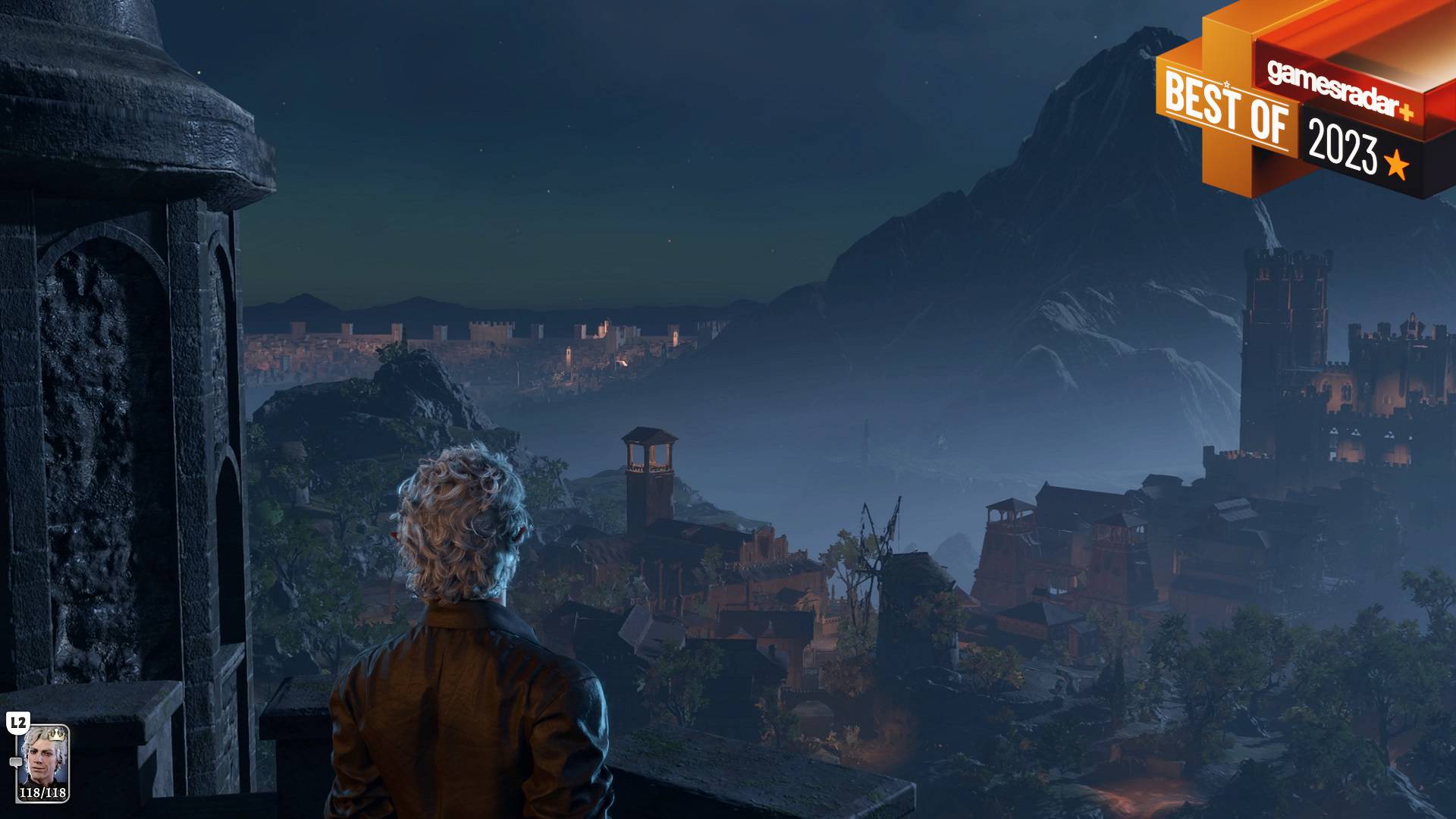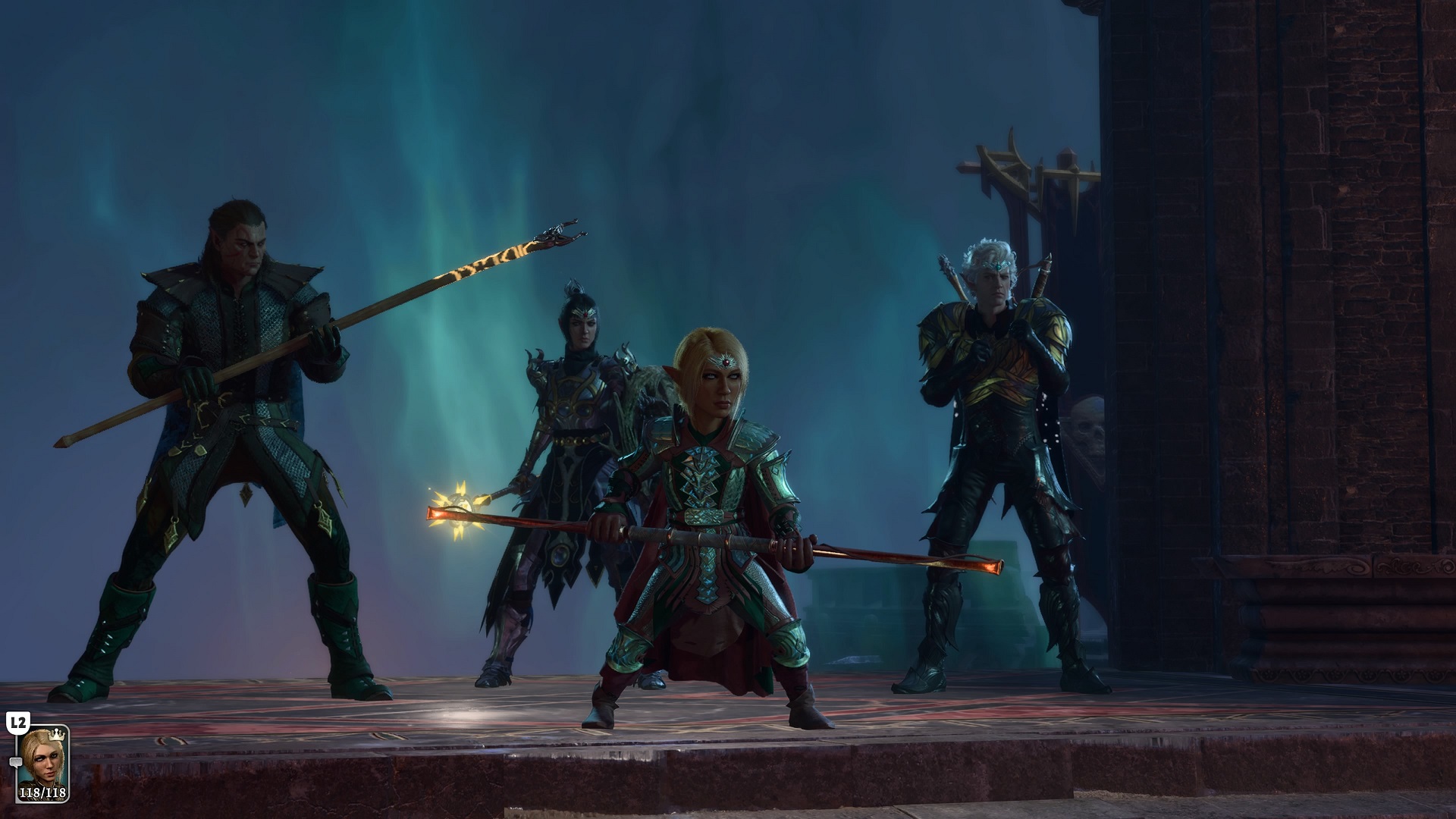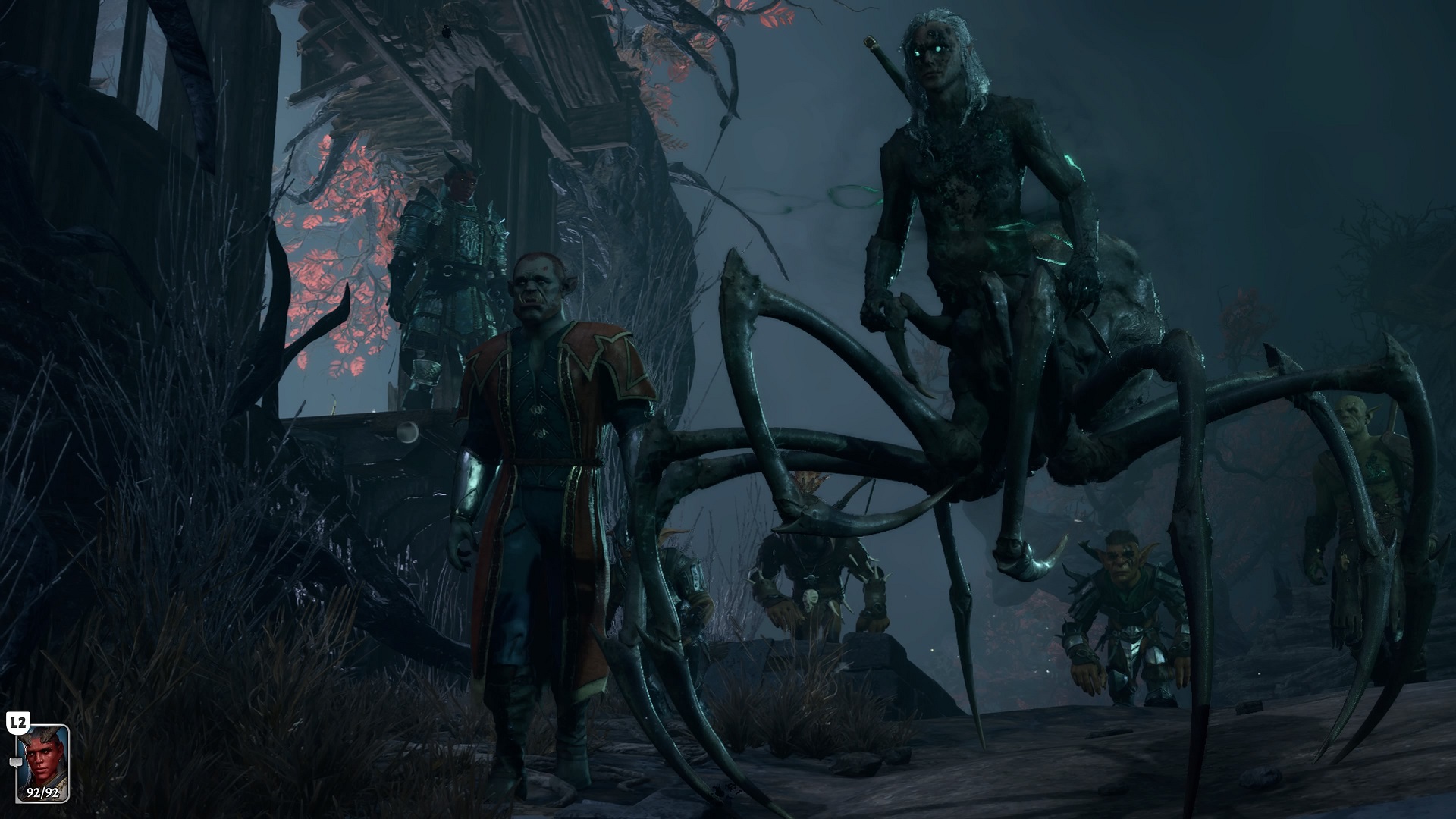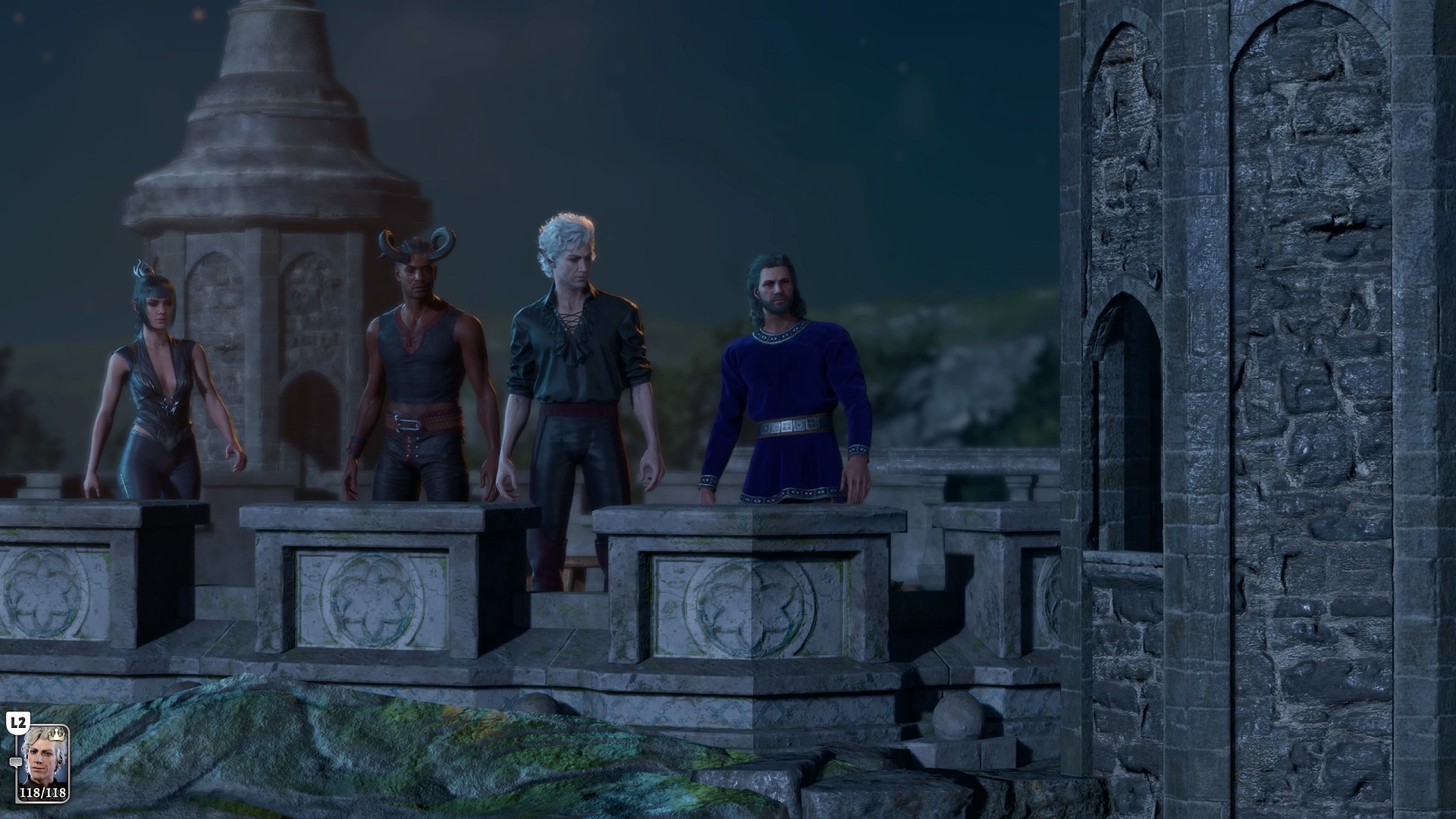Baldur's Gate 3 is our Game of the Year, and that wouldn't be possible without the developer's expert worldbuilding: "The biggest challenge is to keep the player interested"
Best of 2023 | Baldur's Gate 3's worldbuilding and storytelling work together to bring to life an unforgettable adventure

Deep in the heart of the Shadow-cursed lands in Baldur's Gate 3's second act, I see a curious ball on the ground. Assuming it to be loot, my curiosity heightens when I highlight it. What I'm seeing is in fact a Shadow Vestige left behind by an enemy I'd just defeated in battle. I may have expected to pick up some kind of item, but what this curio actually gives me is a far greater prize than any treasure.
You sense a fading echo of the person who once was, says the narrator. A dockhand. He did not ask for this. I sit with the line for some time, staring at the ghostly ball that suddenly becomes so meaningful. It may just be one little interaction, but this simple line of dialogue holds so much weight. It's shining a light on the dark world I'm in and my perspective immediately changes as a result. The shadows I've been fighting aren't just shadows, they're a reminder of the great tragedy that unfolded in these lands. They're victims who lost their lives thanks to the curse and Ketheric Thorm.

The 25 best games of 2023, as picked by the GamesRadar+ team.
"Originally, Act 2 was set in the Shadowfell. The Shadowfell is a dark, nearly colorless plane of existence," world building director Farhang Namdar says. "We always had this idea that the people you would meet were reflections of what they did in their life before this shadow curse hit the region. However, setting the entire region and all events in the Shadowfell appeared to be too limiting. So we created the shadow curse and applied the idea we had to the shadows."
It's little details like this that bring Baldur's Gate 3's rich and varied world to life. The more time I spend in Larian's RPG, in fact, the more I realize there's no one reason why Baldur's Gate 3 is so effective at holding your attention and rarely letting go. Rather, it's a confluence of features, D&D-inspired systems, and smaller touches that work in tandem to deliver an immersive, compelling experience – and it's for all of these reasons that Baldur's Gate 3 is GamesRadar+'s Game of the Year for 2023.
Finding Faerûn

From minor aspects of the environment that do so much heavy lifting to paint a wider picture of the world, to myriad choices at your fingertips, and a cast of loveable characters to get to know, everything Larian has crafted delivers an impressive sense of scope throughout its three acts. But with each act taking you to different parts of the Sword Coast, the scale of the adventure also comes from just how varied and different each section of the RPG plays and feels.
The opening act is teeming with locations to see and discover, from an abandoned Blighted Village with a lot more going on below the surface that first meets the eye, to a goblin camp, and the Emerald Grove. It contrasts greatly with Act 2, which plunges you into dark, dangerous landscapes full of intrigue and brimming with horrors.
Then, in Act 3, you finally reach the much-fabled Baldur's Gate city itself and face some of the most challenging and memorable moments in the game. While all different, each act has one strength in common: depth. There's so much to do and see across the board; every location just begs to be explored. For the team at Larian, each act was approached with a different experience in mind, with Act 2 presenting its own unique set of challenges.
Sign up to the GamesRadar+ Newsletter
Weekly digests, tales from the communities you love, and more
"From a world building and gameplay point of view we were looking for different experiences per act," Namdar says. "Act 1 was a classic open world RPG, Act 2 limited the player in this capacity in a world shrouded by darkness. And Act 3 was a classic city/dungeon grinder/room to room kind of experience. Which was closer to what was expected from a game like Baldur’s Gate."
"The problem lay in the fact that Act 2 was an act shrouded in darkness. From experience we knew that players didn’t enjoy being in the darkness or grim environments for too long. Limiting their exploration and traversal was a very harsh, or as some would say an old school thing to do. This literally meant we had to make every inch of this region interesting. Which naturally meant that we had to have some big reveals and interesting locations with different visual and gameplay environments than the Act 2 overworld."
Dungeons and Dragons

"We added a lot of personal experiences on top of that as well. These worlds reflect places on earth that we've physically experienced. Being able to relay those feelings combined with the rich D&D lore was absolutely fantastic."
Farhang Namdar
Despite how dark and gloomy Act 2 is, I think it's one of the most fascinating areas in the entire game, with an abundance of details that tease information about its world and history. But as much can be said about every location in Baldur's Gate 3. Each area you come across takes you to another pocket of the Sword Coast that's full of points of interest and hidden gems to uncover – to the point where the variation of each act not only gives you a chance to immerse yourself in the world at large, but it also keeps the RPG from feeling like it's treading the same ground for overly long over the course of its lengthy playtime.
As Namdar says of the worldbuilding process, "the biggest challenge is to keep the player interested", and variety is "one of the easiest ways of keeping the player engaged". But Larian also had to factor in how to build up a world that would support what is arguably Baldur's Gate 3's biggest strength of all: storytelling. "The narrative is really the main drive in our games," Namdar adds, "so everything we make, all the actions you do as a player, need to feed back into that."
As a world and story that's born from D&D's rich lore and established rulebook, many locations of course drew inspiration from Wizards of the Coast's TTRPG. While the worldbuilding process was primarily led by the narrative team's story, the wider team also pooled from their own personal experiences to craft a diverse setting that brings the adventure to life.
"It's not easy creating worlds for a hundred hour game," says Namdar. "You'll take all the inspiration you can find! The rich D&D lore was a fantastic support to lean on. The worldbuilding process relied on the story provided by our narrative teams. We added a lot of personal experiences on top of that as well. These worlds reflect places on earth that we've physically experienced. Being able to relay those feelings combined with the rich D&D lore was absolutely fantastic. Everything that we’ve built was always a combination of years of creativity and the experiences of every team member involved."

As a studio, Larian is no stranger to creating richly detailed RPGs, with its most recent games, Divinity Original Sin and Divinity Original Sin 2, fitting a similar mold. As Namdar says, the studio has always strived to recreate the magic of playing D&D, and Baldur's Gate 3 presented the opportunity to do just that for real. Drawing from their wealth of experience with the genre, they also took inspiration from their own time playing D&D during development.
"As a developer of CRPGS we have an extensive toolbox of situations and interactions. We apply these to every game we make," Namdar says. "On top of that a lot of the interactions with the game world were based on our personal experiences playing our own D&D campaigns! It’s strange because we grew up with D&D. We always tried to recreate that experience in our other games. In BG3 we didn’t need to pretend we could just be D&D!"
The result of Larian's approach to worldbuilding has played no small part in just what makes Baldur's Gate 3 such a memorable, engrossing experience. The Sword Coast is a setting resplendent with choice, variety, intrigue, heart, and danger. It's a place you want to get lost in and visit time and time again, just to see what paths you've yet to tread. It's no wonder it's one of the most talked about games of the year, and indeed GamesRadar+'s Game of the Year for 2023. Larian has succeeded at crafting an unforgettable world in Baldur's Gate 3, and it's one we're sure to be talking about for years to come.
Look ahead to all of the exciting future releases on the way with our roundup of new games.

I started out writing for the games section of a student-run website as an undergrad, and continued to write about games in my free time during retail and temp jobs for a number of years. Eventually, I earned an MA in magazine journalism at Cardiff University, and soon after got my first official role in the industry as a content editor for Stuff magazine. After writing about all things tech and games-related, I then did a brief stint as a freelancer before I landed my role as a staff writer here at GamesRadar+. Now I get to write features, previews, and reviews, and when I'm not doing that, you can usually find me lost in any one of the Dragon Age or Mass Effect games, tucking into another delightful indie, or drinking far too much tea for my own good.


